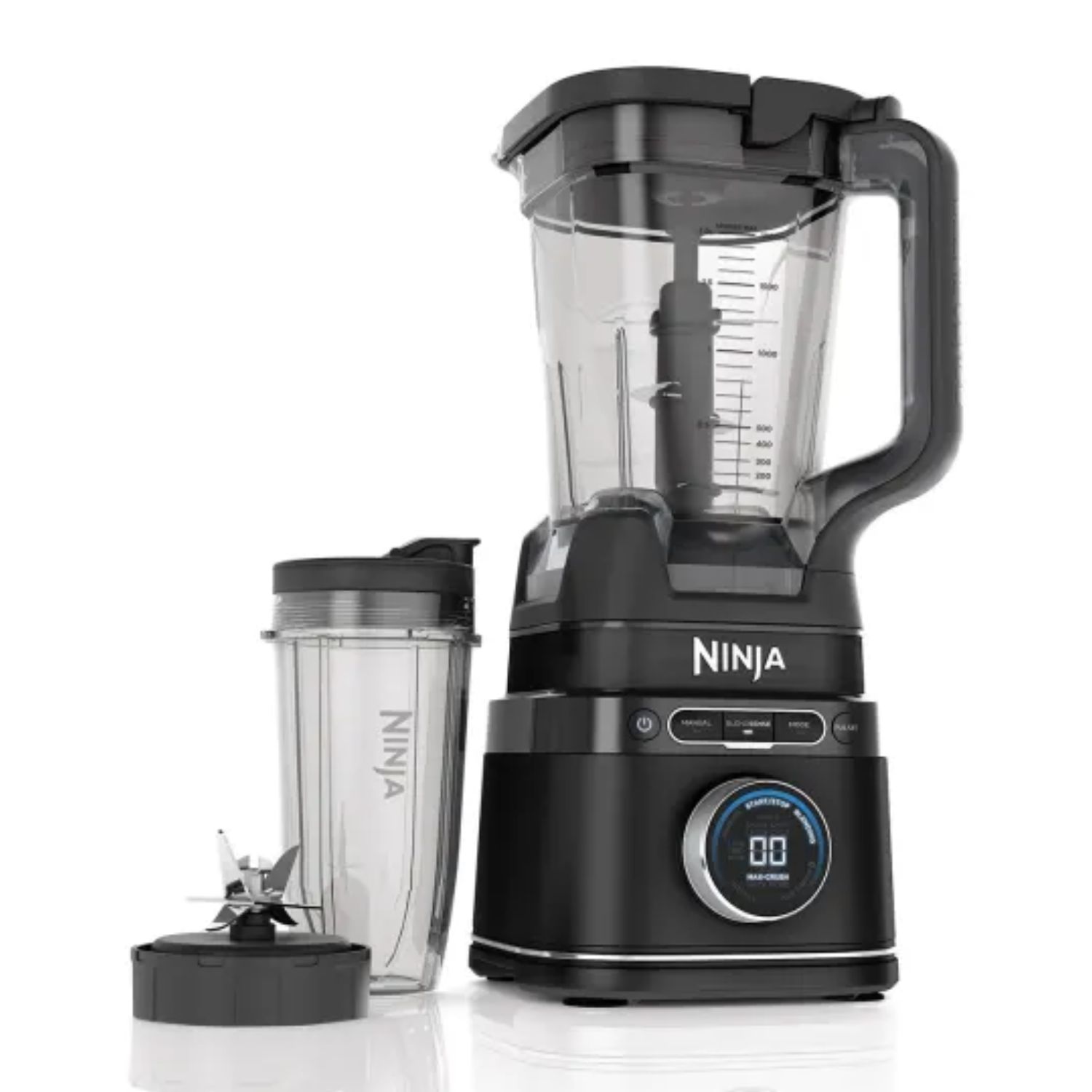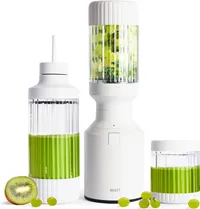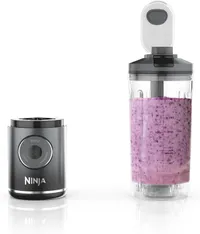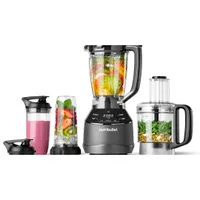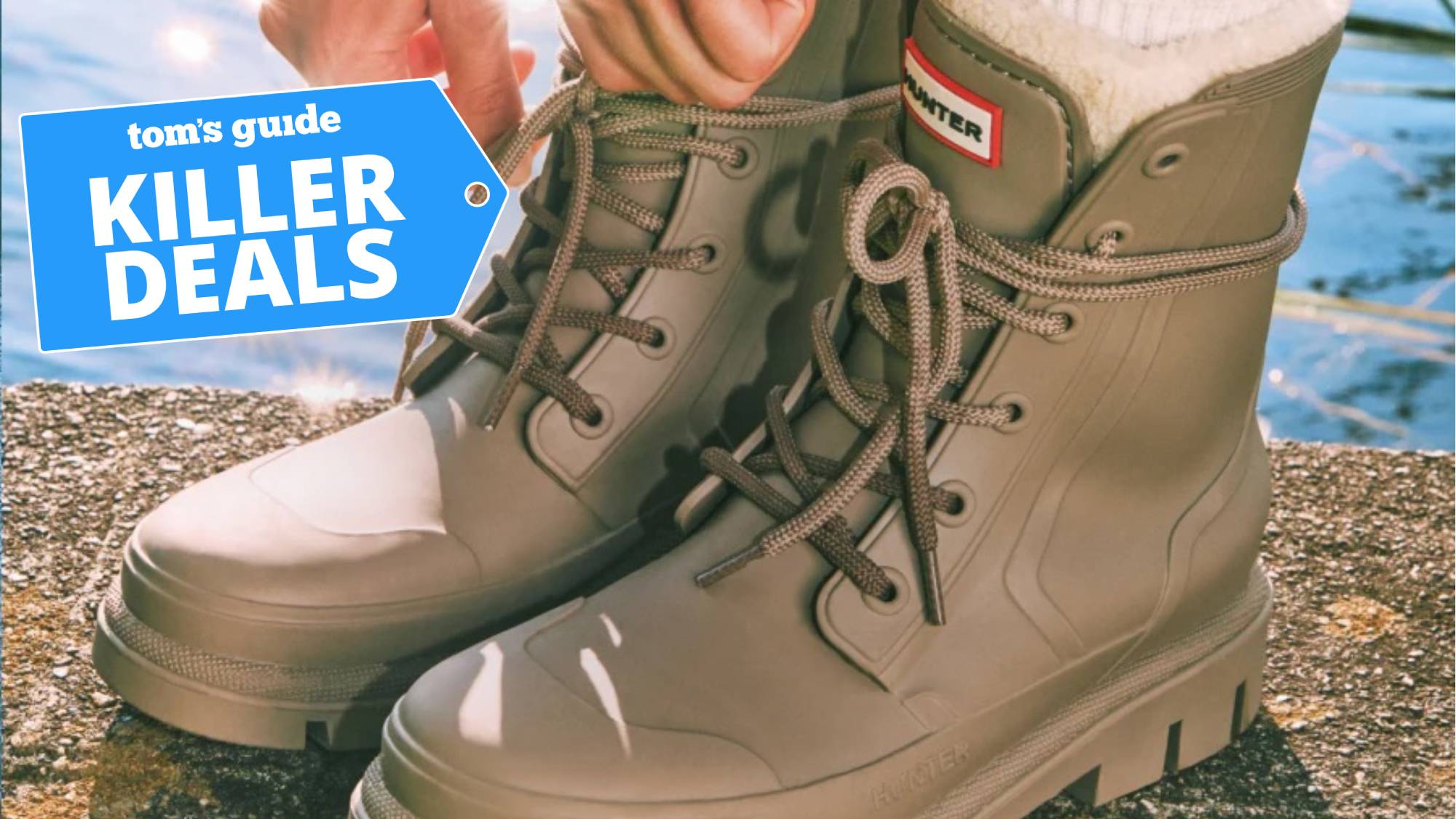This is the best blender in the world, and two trusty, cheaper alternatives
We tested dozens of the best blenders, and these three take the podium positions
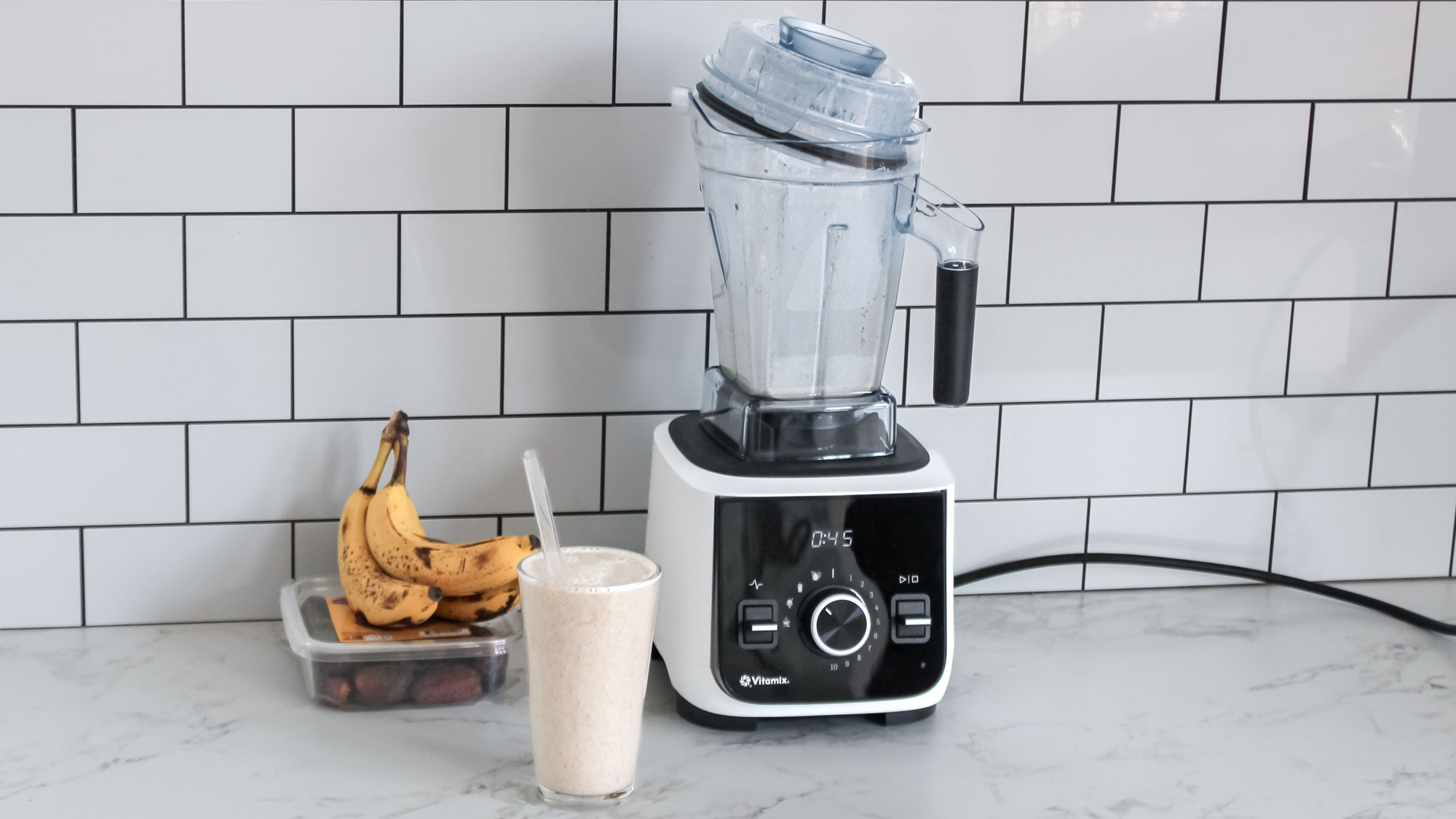
The best blender is the Vitamix Ascent X2.
That's it. That's the buying guide.
But if you want to know more, allow me to preach about why Vitamix is the king of blenders. There are a number of Vitamix blenders on the market and they're all great, but the Ascent series is my personal favorite. It's the only blender I've monologed about over a glass of vino, which tells you that I'm:
We've recently tested blenders from Beast, Ninja and KitchenAid, and none of them quite managed to secure a spot on the podium, although we did award the Beast a rare five-star review.
Ninja also announced its new BlendBoss Blender in October, and I've already seen it all over my social media feed. It looks like a promising product, and we've called it in for a full review.
a) in the right line of work,
b) really in love with my Vitamix, and
c) not so fun at parties.
Even so, not everyone can afford the $500 Vitamix, and we do take value for money into account when reviewing the best blenders. So I've chosen the amazingly-priced $150 Ninja Detect, or if you want to spend under $100, the Nutribullet 900, as my runners-up.
The blender Olympics
Think of this guide like the blender Olympics.
The Vitamix Ascent Series X2 gets gold, naturally. But my silver medal winner is the Ninja Detect Power Pro, which also happens to be a third of the price of the Vitamix.
And if you're looking for a sub-$100 model and are willing to compromise on a few things, the Nutribullet Pro 900 cinches the bronze.
The best blender you can buy
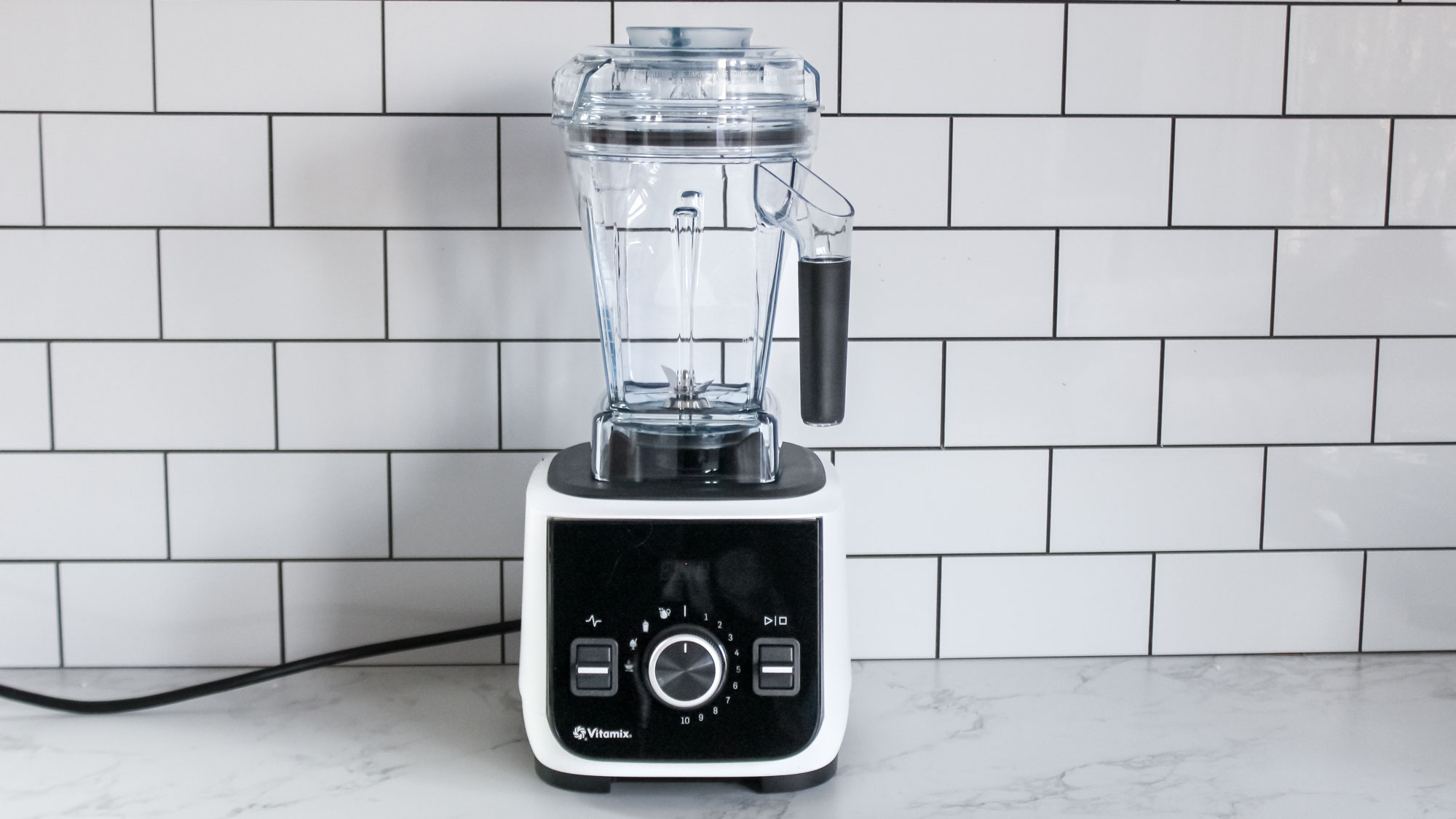

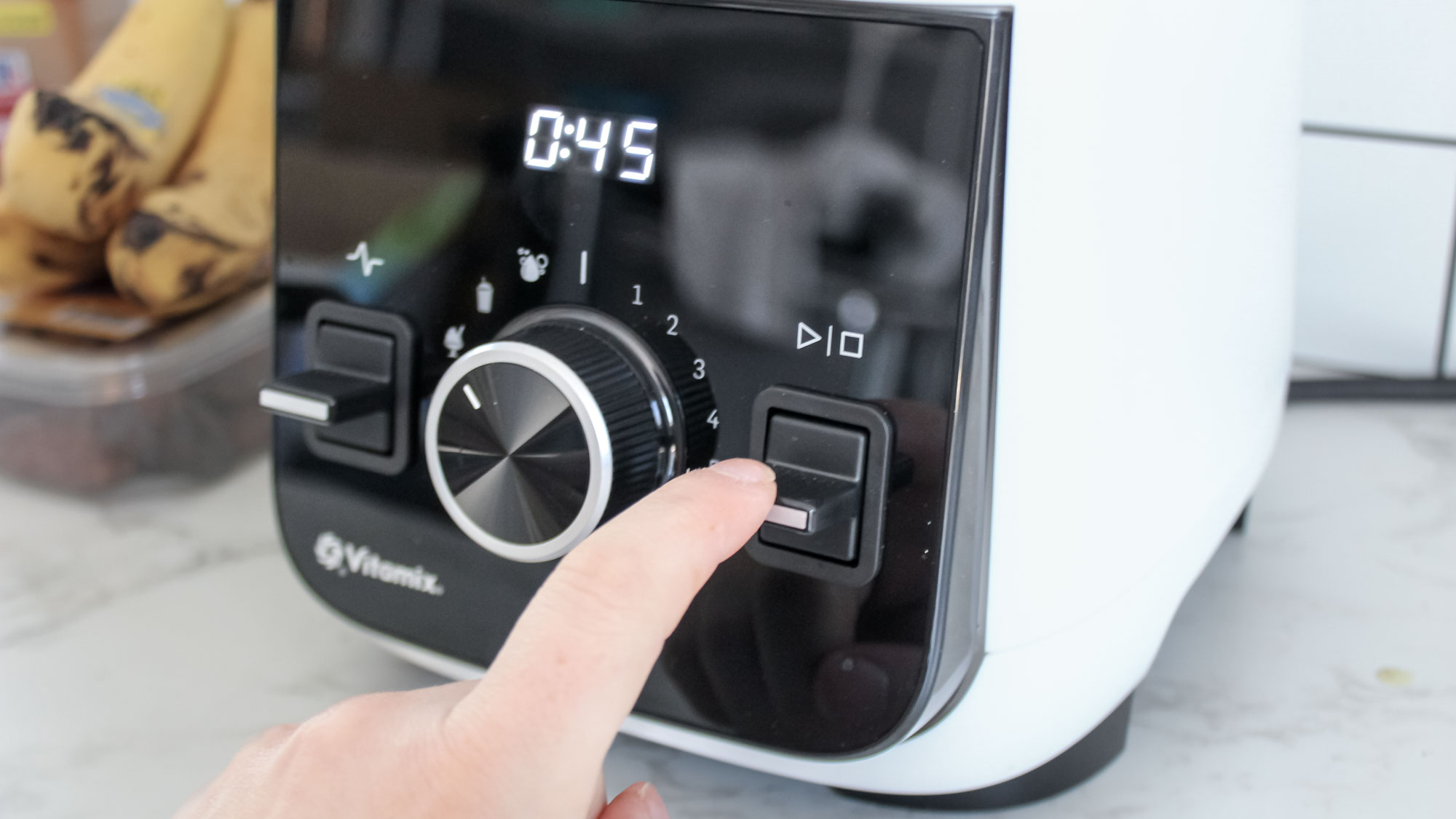

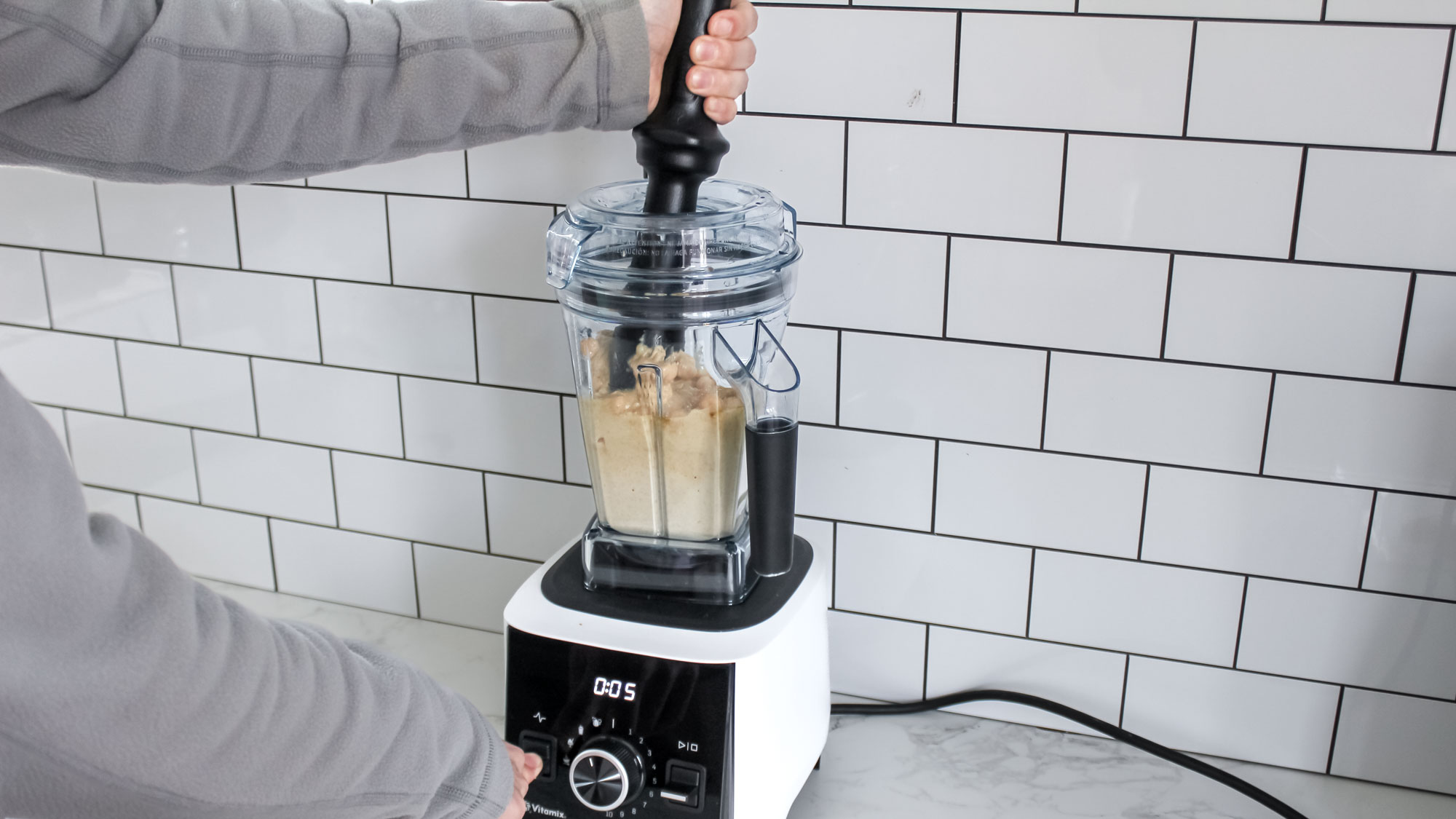
Specifications
Reasons to buy
Reasons to avoid
I first used my Vitamix Ascent A3500 back in 2022, and to this day, it's one of the best products I've ever tried. So when I learned that Vitamix had re-designed the Ascent series in late 2024, I was nervous to see if it could match up to its predecessor.
Recently re-designed, I was concerned that the perfect formula could be broken. I was relieved to be proven wrong when my go-to freelance kitchen product tester Camryn Rabideau reviewed the new Vitamix Ascent X2 and scored it yet another perfect 5 stars. Trust me, Camryn's reviewed countless kitchen appliances, and a 5-star rating is a very rare thing.
She said, "It’s by far the most powerful blender I’ve ever used, and I don’t think there’s any task it can’t handle."
The only issue? Vitamix blenders are expensive. This is a blender you won't regret buying, but I get that it's not an option for everyone.
I've never met a Vitamix owner who didn't rave about how much their blender changed their life, and even the Amazon reviews reinforce this.
My favorite review comes from someone called Tracey, who says, "God uses this blender to make his smoothies" and "This blender is just superior in every single way." Another user called Tatumn says "I want to marry my Vitamix." So yeah, this might be the most hyped blender in the world, but it's worth every single 5-star review.
The full review...
Features
The Ascent X2 has three pre-set modes: soup, smoothie and frozen. There's also a self-clean setting. You can active these by turning the dial anti-clockwise, but when you twist it clockwise you'll instead switch on its variable speed settings, which go from 1 to 10.
A reader recently reached out and asked if this blender was available in Europe, so I put the question to Vitamix directly. Their response was that they do plan to bring the new range of Ascent blenders to the U.K., but there's no timeline currently in place to do so.
The hefty and powerful base can be paired with Vitamix's Self-Detect Containers, meaning you can also turn this machine into a food processor or spice grinder if you want to make the most of your counter space.
One of the only downsides of this blender is that it's noisy. It hit 81dB when testing, and the sound is honestly comparable to the revving of a motorbike, which I guess is a testament to just how much power this blender offers.
Smoothies
If you go to a commercial smoothie store you'll typically see a Vitamix or a Blendtec behind the counter. While making a good smoothie is a bare minimum for any blender review, and the Vitamix makes especially light work of it.
It liquefies ice, frozen fruit, leafy greens, and nuts with relative ease, and with fewer fibers, seeds, and shards of ice than you'll find in either the Ninja or Nutribullet blenders.
Between Camryn and myself, we've made countless smoothies in the Vitamix. Camryn was impressed that the Ascent X2's smoothie mode could deliver "the most perfectly blended smoothies that I’ve ever tasted" in only 45 seconds.
Seriously, you think you've tasted a smooth smoothie, but when you take a sip of a Vitamix smoothie you'll think again. I'm talking cloudlike, could've been blitzed and strained by a professional kitchen-level
Dips
My local grocery store's hummus sales dipped once I got my Vitamix. Thankfully, this was offset by an increase in tahini and chickpea sales as I experimented with different flavors and recipes.
Some blenders can't cope with thicker recipes — you might find this if you opt for the Nutribullet, as its blending cup can't create the kind of circulation you need to integrate dry ingredients without going in and giving them a stir.
The Vitamix needs some help, too, but you can use the included tamper to mix while blending. Our only real complaint is that it's tricky to get all of the dip out of the blender because it requires using the spatula to scrape down under the blades.
Soups
The recipe that really proved this blender's worth to me was the tomato soup I made from scratch in this machine. The recipe was included in the book that comes with every Vitamix blender, and it told me to add raw onion, garlic, carrot, and tomato to the pitcher along with some seasoning and stock.
I was more than dubious that a 12-minute (noisy!) blend could turn these raw veggies into a fully-cooked soup, but not only was I proven wrong, I was proven wrong by one of the tastiest, creamiest soups I'd ever made.
There was not a single grain of veg un-puree'd, not a rogue tomato seed in sight. Everything was steaming hot and incorporated into a creamy consistency that could only be compared to soups I'd tasted in restaurants. Expensive restaurants.
Read our full Vitamix Ascent X2 blender review
Almost as good, and a third of the price
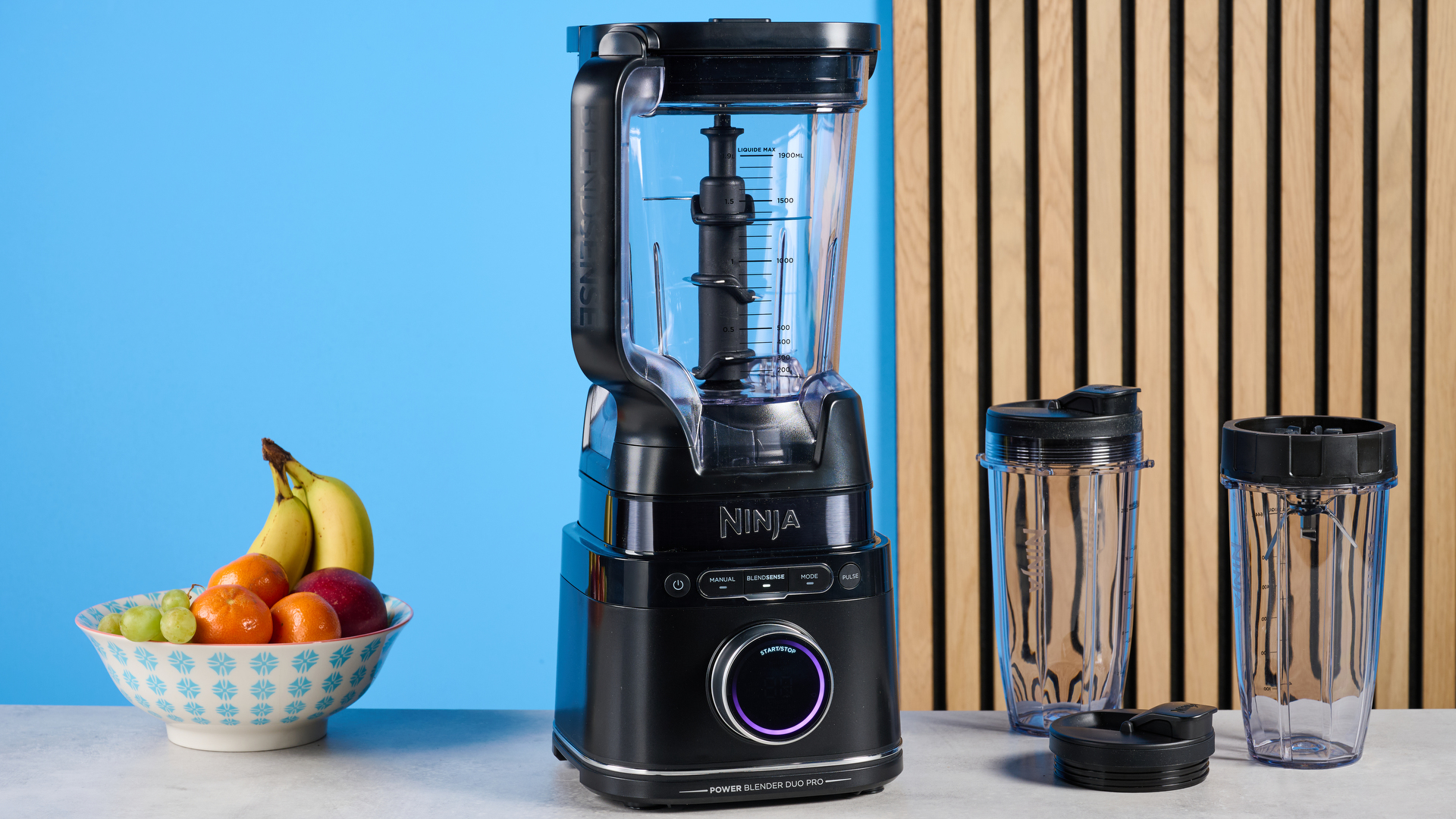

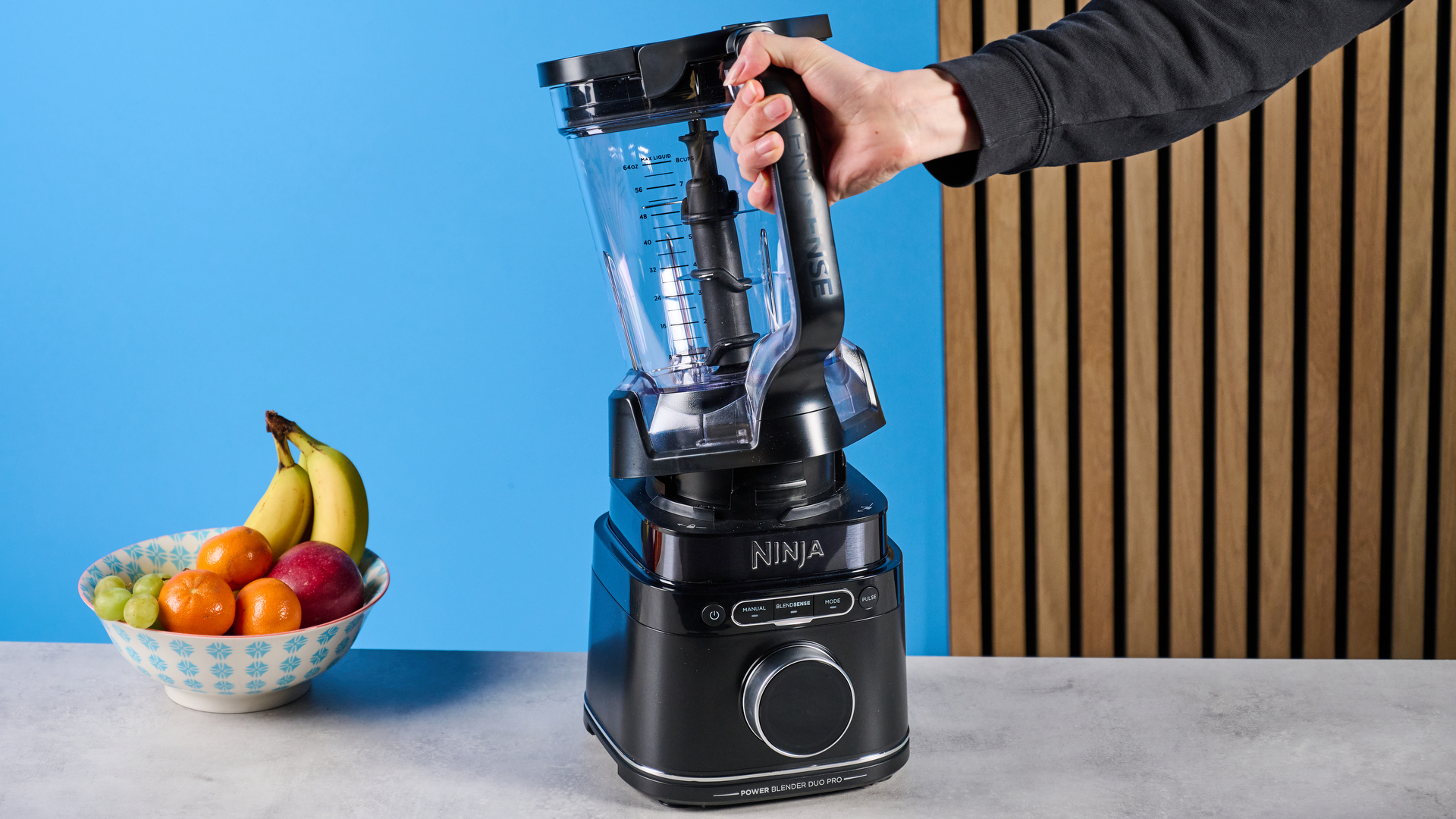
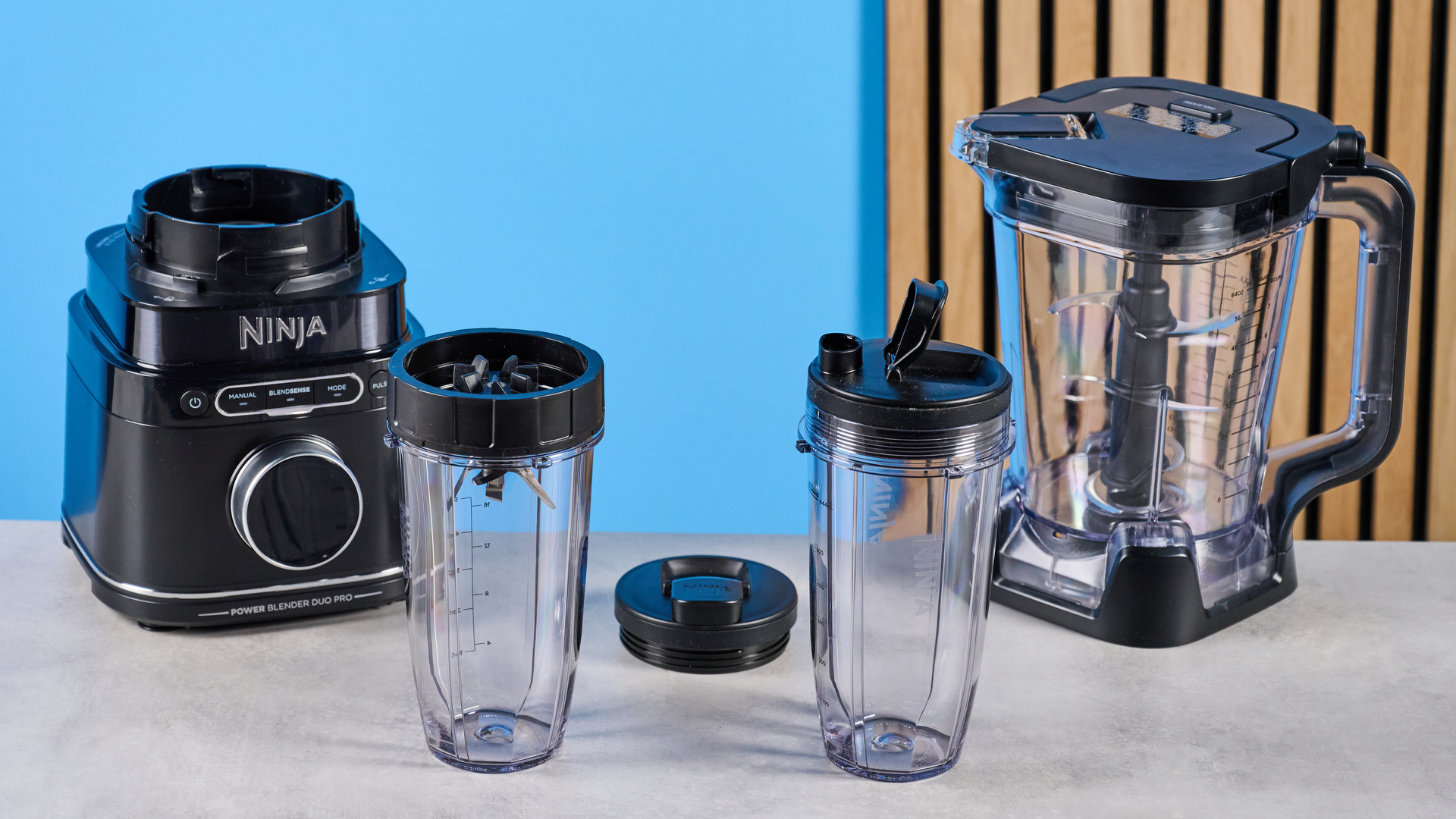
Specifications
Reasons to buy
Reasons to avoid
Ninja likes to throw a bit of jargon on every generation of its latest blenders. The older models come with "Auto IQ", and the latest addition is BlendSense. This claims to automatically sense the weight and firmness of your ingredients and adjust the blend setting accordingly.
How, you ask? Well, we couldn't quite get to the bottom of that in testing, and there's not much info on the tech online. Luckily, though, this blender is just so powerful that you don't need jargon or auto features to recommend it. It's just really good at blending.
With 1800 watts of power (that's technically more than the Vitamix, but watts aren't necessarily the best indicator of how powerful a blender is due to the variety of motor types available), it's more than capable of blitzing just about anything you throw at it.
Our review writer Erin Bashford said "I wouldn’t be surprised if this blender could blend rocks", although we obviously don't recommend trying that at home.
The full review...
Features
As for settings, you can choose from the mysterious (but somehow quite smart) BlendSense mode, or go manual with low, medium, and high settings. You could pay a bit extra to get a food processor attachment for this blender, but it's nice that it comes with a personal smoothie cup included.
Smoothies
The test of any good blender should be its smoothie-making ability. It's both the bare minimum test, but also the most likely user case for day-to-day blending. In my house, we make a smoothie in the Vitamix most mornings.
Testing the BlendSense mode using a frozen berry smoothie gave us a sense of how this works. It blended for a few seconds, "sensing" the ingredients, and opted to blend for 80 seconds. That's quite a long blend for a smoothie!
However, the finished result was totally divine. At this point it really looked like the Ninja could give Vitamix a run for its (plentiful) money. Accordin to Erin, "there were no pieces of ice whatsoever, and even the fruit seeds were gone."
Dips
We like to make hummus in blenders because they require more than raw power to make a good dip. A blender requires sensitivity to integrate all of the chickpeas and more dry ingredients without simply splattering them around the blending jug.
After opting for the "crush" setting, the Ninja made surprisingly light work of the hummus given the lack of auger, which is a tool I use in the Vitamix all the time to ensure a consistent vortex movement in the ingredients, allowing everything to be blended evenly.
In under a minute, we had a really smooth dip that was also easy to tip out of the pitcher due to how well the Ninja integrated our ingredients, no splattering necessary.
Nut butters
Erin loves to make homemade peanut butter, so she decided to give the Ninja Detect a real challenge and make a nut butter from scratch. This is a lenghy process, requiring enough of a blend to release the oils from the nuts, which will eventually turn from a powder, to a paste, and eventually to a creamy and smooth sauce consistency.
After a few minutes, with a scrape-down of the sides in between, Erin was shocked at how well this blender tackled a longer blending task. She said, "I cannot describe how utterly delicious this peanut butter was."
Like making a soup in the Vitamix, being able to use a blender at high speeds for a prolonged period is a sign that the motor won't overheat easily. In other words, it's built to last.
Read our full Ninja Detect Power Pro blender review
The best budget blender you can buy


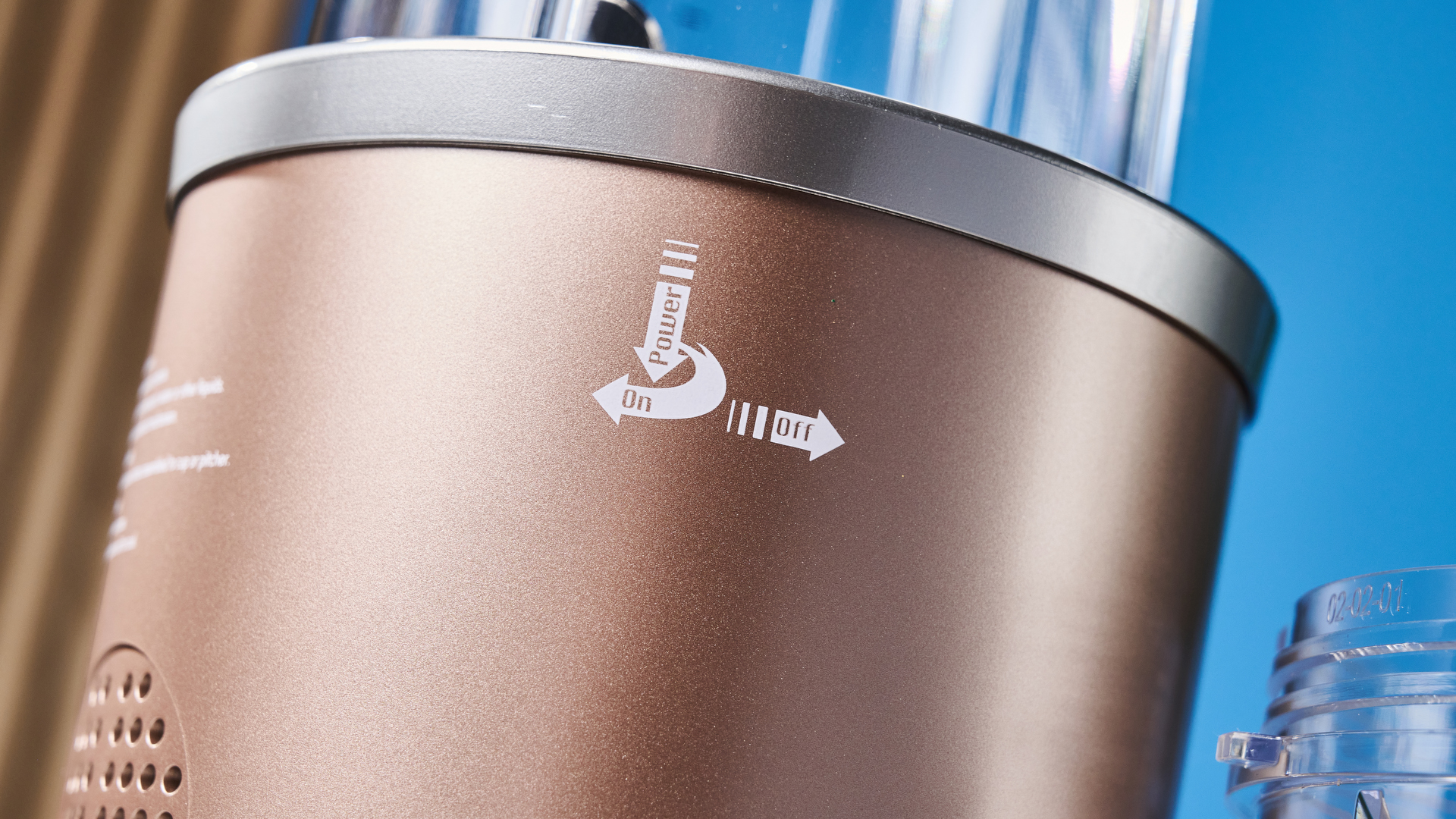
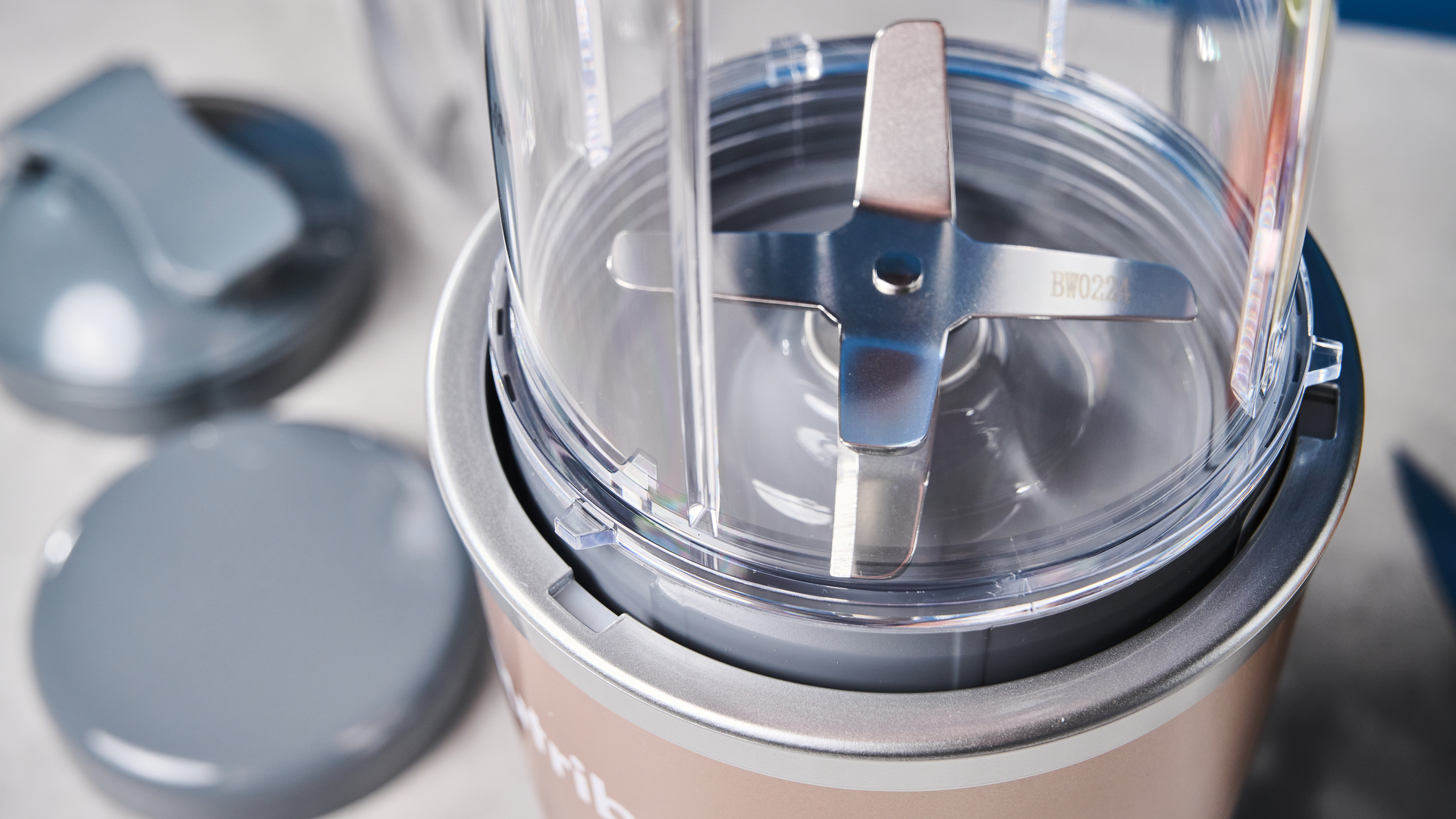
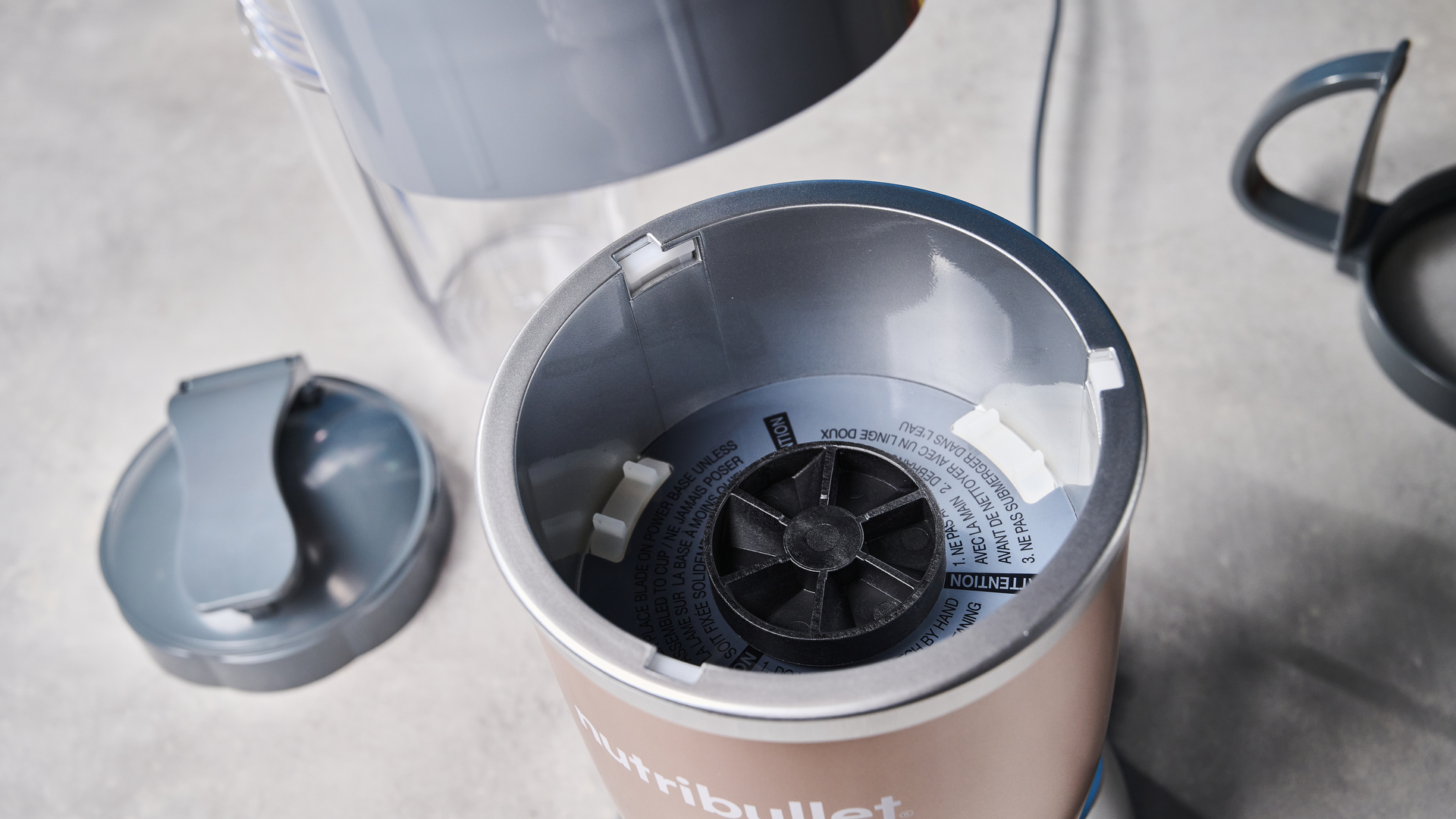
Specifications
Reasons to buy
Reasons to avoid
We've gone from the Vitamix's pure power to the Ninja's AI-style jargon, and now I finally present to you the simplest blender imaginable.
It's easy to forget that Nutribullet literally re-invented blending not 15 years ago. I was a teenager at the time, and my mom was totally obsessed with her new gadget. In total honesty, I can't even remember if we'd had a blender up until that point. The Nutribullet put homemade smoothies on the map, and brought with it a generation of protein shake-swigging and detox drink-making health fanatics.
So while the features such as speeds, smart settings, and automatic timers are decidely lacking, let's give the OG single-serve blender its flowers. The Nutribullet Pro 900W is an oldie, yes, but it remains a goodie.
The full review...
Features
There's not even a button on this bad boy, you just turn it on by twisting and locking your blending cup into place, and turn it off by un-locking it.
There's one speed, two cups, and three lids, allowing you to take it on the move or store your smoothie for the next morning.
Smoothies
Straight up, the Nutribullet was designed for smoothies and only (really) smoothies. It's got a very different design to the pitcher-style blenders I've included above: it's a lot smaller, and its two blending cups will serve, at most, two smoothies in one go.
That's not a bad thing, it's just the nature of the product. The shape of the cup adds some extra downward pressure to the blending process and will encourage it to create a blending vortex that integrates ingredients easily, so long as there's enough liquid.
And sure enough, this blender has never let us down when making a smoothie, and we've used it a lot. It's a noisy one, and because you turn it on and off yourself, you'll need to be in the room with it to choose when your smoothie is done. Usually, 30 seconds is more than sufficient for a creamy, well-blended drink.
Iced drinks
Ice is a good challenge for a blender at this price. A bad blender won't so much pulverize as smash your ice, leaving gritty shards over a slushie-like consistency. Reviews writer Erin, who used to work as a barista in a popular coffee chain (hint: it ends in 'bucks'), has made many a frappuccino in her day, so she gave it a spin in this budget blender.
"I blended for about five seconds", she said, "That’s all the Pro 900 needed to make me a smooth, refreshing iced frappe!"
So while the 92dB (ouch) noise of the ice crushing and blender whirring was a little high, it's tolerable for such a speedy blend.
Dry ingredients
Full transparency: Nutribullet tells you not to blend dry ingredients in its blenders. And there's a reason it will struggle to handle them compared to the likes of Vitamix and Ninja. The tapered edge of the blender cup will make it tricky to circulate dry ingredients, and it could overheat the motor if you don't give it a little liquid to work with.
Despite this, Erin made a whole cheesecake with this gadget. She pulsed a cup full of cookies (which will require you to press the cup down and lock, then twist to unlock and repeat) a few times and was left with a decent crumb for her base, then threw some cream cheese, cream, and icing sugar to make the cheesecake filling into the cup and the blender incorporated with ease.
So while it's primarily my recommendation for those who want to make a simple smoothie in the morning and don't want a big, brash, and expensive blender, you still get some versatility with this option. And if my mum's OG Pro 900 is anything to go by, it will last you a very long time.
Read our full Nutribullet Pro 900W review
Also tested
Just because I didn't feature it, doesn't mean it's bad. In fact, some of the top blenders I've tried didn't make the cut for this list. So if you're still not sure on the best blender for you, take a look at these other models we've tried and rated.
Beast Mighty 850 Plus (★★★★★)
We awarded the Beast a rare five stars, and strongly considered adding it to the best blender lineup. In the end, I decided that it can't compete with Nutribullet in terms of value. What it does win out on is style. This chic and multi-functional blender is relatively affordable and looks a lot more premium than the price would suggest.
Read the full Beast Mighty 850 Plus review
Ninja Blast Max (★★★★☆)
The portable blender market is niche, but not nonexistent. I was recently eavesdropping on a conversation on the best blenders while sat on a train, and a man said that he initially bought the Blast Max for using at the gym, but it's recently become his everyday blender. And while it's got limited utility, it's a really savvy and affordable choice if you like to make smoothies and have a small space available.
Read the full Ninja Blast Max review
Magimix Blender Power 4 (★★★★☆)
If you want a plastic-free blending container, the Magimix Blender Power 4 would be a smart choice. The French-based brand that invented food processors also makes a brilliant line of blenders that can blitz, mill and even make nut butter from scratch.
Read the full Magimix Blender Power 4 review
Breville Super Q Blender (★★★★☆)
The Breville Super Q Blender is a really great choice. It's marginally cheaper than the Vitamix, and in my opinion, marginally less good. If you see it on sale or you want a shiny steel option to match your coffee maker, this powerful choice won't let you down.
Read the full Breville Super Q Blender review
Ninja Professional Plus Blender with Auto IQ (★★★★☆)
There's nothing wrong with the Professional Plus. It used to sit pretty high up in this guide. But the newer model is just that bit better. The fact that it's older could mean it goes on a great sale from time to time though, so if you love to save, it's a solid choice.
Read the full Ninja Professional Plus Blender with Auto IQ Blender review
Blendtec Total Blender Classic (★★★★☆)
Like Vitamix, you'll often find Blendtec blenders in professional smoothie stores. In my opinion though, they're less adaptable to home use than Vitamix, and equally expensive. Plus, I just don't think they look as nice.
Read the full Blendtec Total Blender Classic review
Nama C2 Cold Press Juicer and Blender (★★★★☆)
I really loved testing the Nama C2 Cold Press Juicer and Blender. It's a great blender and a great juicer, what's not to like! Well, the price is one thing. And I also think it speaks to a more specific market by offering 2-in-1 functions. But if that's you, it gets my stamp of approval.
Read the full Nama C2 Cold Press Juicer and Blender review
Nutribullet Smart Touch (★★★★☆)
The Nutribullet Smart Touch is a good budget jug-style blender, but the Ninja is better and only slightly more expensive. In testing we enjoyed all 4 modes on offer, but found it finicky to clean.
Read the full Nutribullet Smart Touch Blender review
Smeg Professional High Performance Blender (★★★★☆)
Smeg's Professional High Performance Blender means business. It's a deviation from the brand's traditionally kitschy design and instead offers sleek, quality metal construction. For the price though, I'd still opt for a Vitamix.
Read the full Smeg Professional High Performance Blender review
How we test the best blenders
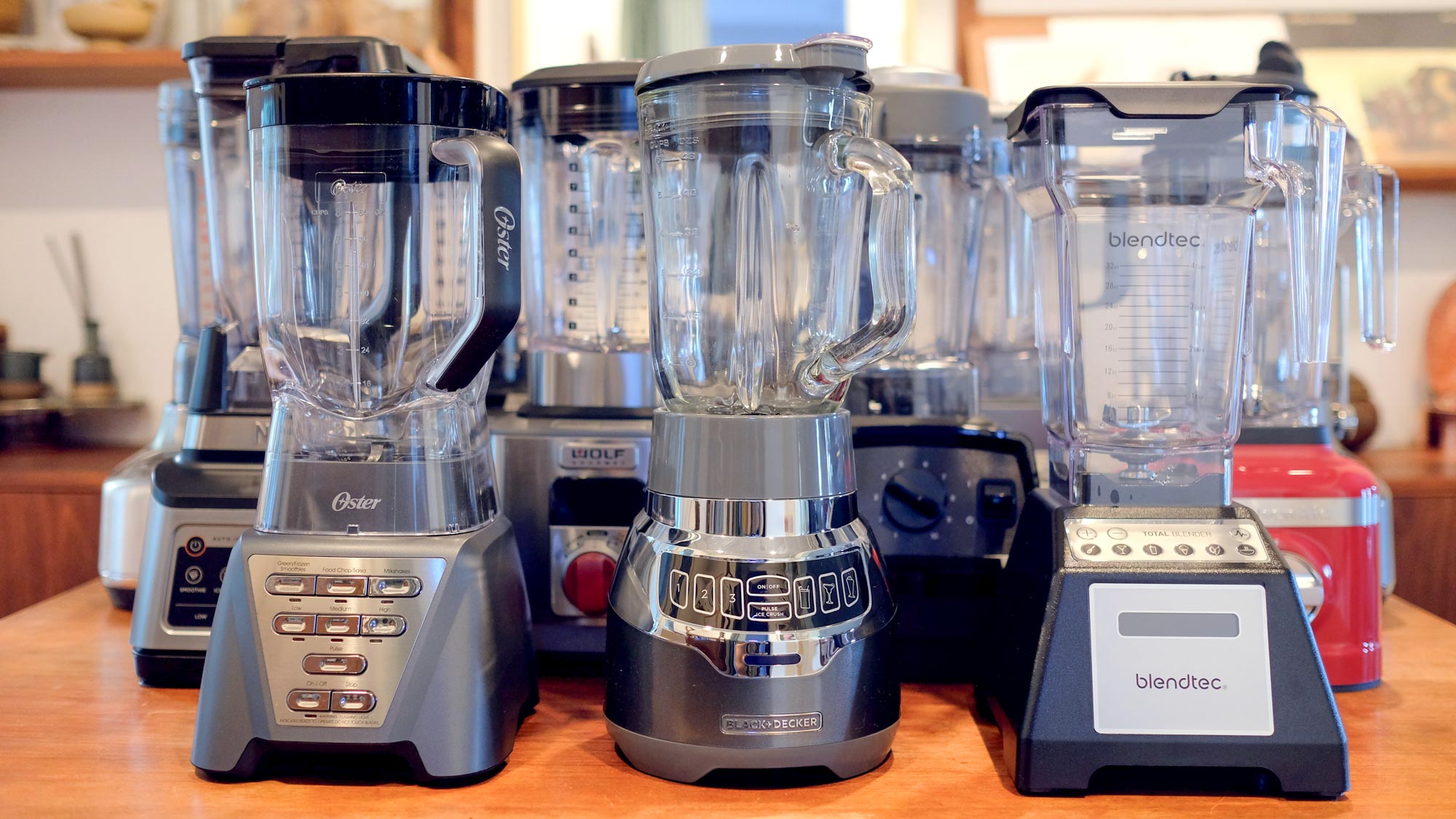
The only way to test a blender is to blend some stuff.
But what do we blend, I hear you ask?
Excellent question. Our tests are designed to put blenders through a range of tasks to ascertain how powerful, noisy, easy to clean, and durable they are.
Our testing team
Why you can trust Tom's Guide
Our testing team is run by our Reviews Editor Peter Wolinski, a former chef and product expert who's used to dealing with the kind of quality kit you'd only find in leading restaurants.
Then there's me, Millie. I'm the Senior Home Editor for Tom's Guide and I've been testing blenders for 5 years. I think every meal can be improved by a sauce, and I'd eat soup every day if I could. So blenders are some of the hardest-working appliances in my own kitchen. I've curated this guide by hand, and have hands-on experience with every major brand on the market.
Erin, our Reviews Writer, has tested a range of popular blenders. This includes the Ninja and Nutribullet models featured in this guide, as well as options from Magimix and KitchenAid. She's also been known to eat homemade peanut butter by the spoon during reviewing. It's all part of the taste-testing process, after all.

Millie has been testing the best blenders for five years. Previously specializing in kitchen appliances at Tom's Guide's sister site Homes&Gardens, she's blended thousands of blueberries and sampled dozens of dips to compare and contrast the very best blenders on the market.

Erin works on Tom's Guide's reviews team, testing all the latest kitchen gadgets for our buying guides.
She tested both of the Nutribullet blenders featured in this guide, and has been using her own Nutribullet 900 long before joining the team.

Camryn is a freelance product reviewer based in Rhode Island.
She's tested dozens of blenders over the years, but the Vitamix is the only one she's awarded a 5-star score for Tom's Guide.

Helen is a home economist turned product reviewer with nearly 20 years of experience in testing the latest and greatest home gadgets.
She started reviewing home and kitchen appliances at the Good Housekeeping Institute in 2007 and have never looked back.
Helen tested the Smeg Professional blender for Tom's Guide in 2024.
Smoothies

The first and most vital test of any blender is how well it can make a smoothie. That's probably what you plan on doing the most in your new gadget, so if a blender can't make a smoothie, it's automatically not getting a good score.
To make it a bit more challenging, we like to throw a range of tricky ingredients into our smoothies. Frozen berries can be tricky for a less powerful blender to fully break down, which could leave you with a gritty texture and seeds stuck in your teeth.
Tough greens like kale and frozen spinach are also a good test of how well a blender pulverizes fiberous ingredients. A really good blender shouldn't leave you with a trace of leaf, just a weird brown color and the smug satisfaction of knowing you're drinking a hidden vegetable.
Finally, ice is a good indication of whether a blender can tackle really hard ingredients. Some can blitz ice unevenly, leaving frosty shards instead of an even, snowcone-like consistency.
Dips

You could have more luck making a dip such as hummus in a food processor, but a good blender will be up to the task.
The lower liquid content of a dip makes it trickier for a blender to pulverize it evenly. And it's not all about power, either. If you ramp the speed too high, it'll splatter all over your blending jug and leave you with chunks of chickpea or herb instead of a smooth, evenly incorporated paste.
Not all blenders include an auger, which is that stick you use to push food towards the blades with the Vitamix, but this is a helpful tool when it comes to incorporating thicker consistencies. The same principle applies for smoothie bowls, where you need to get a bit involved to ensure every ingredient is circulating in the blending bowl.
Soups
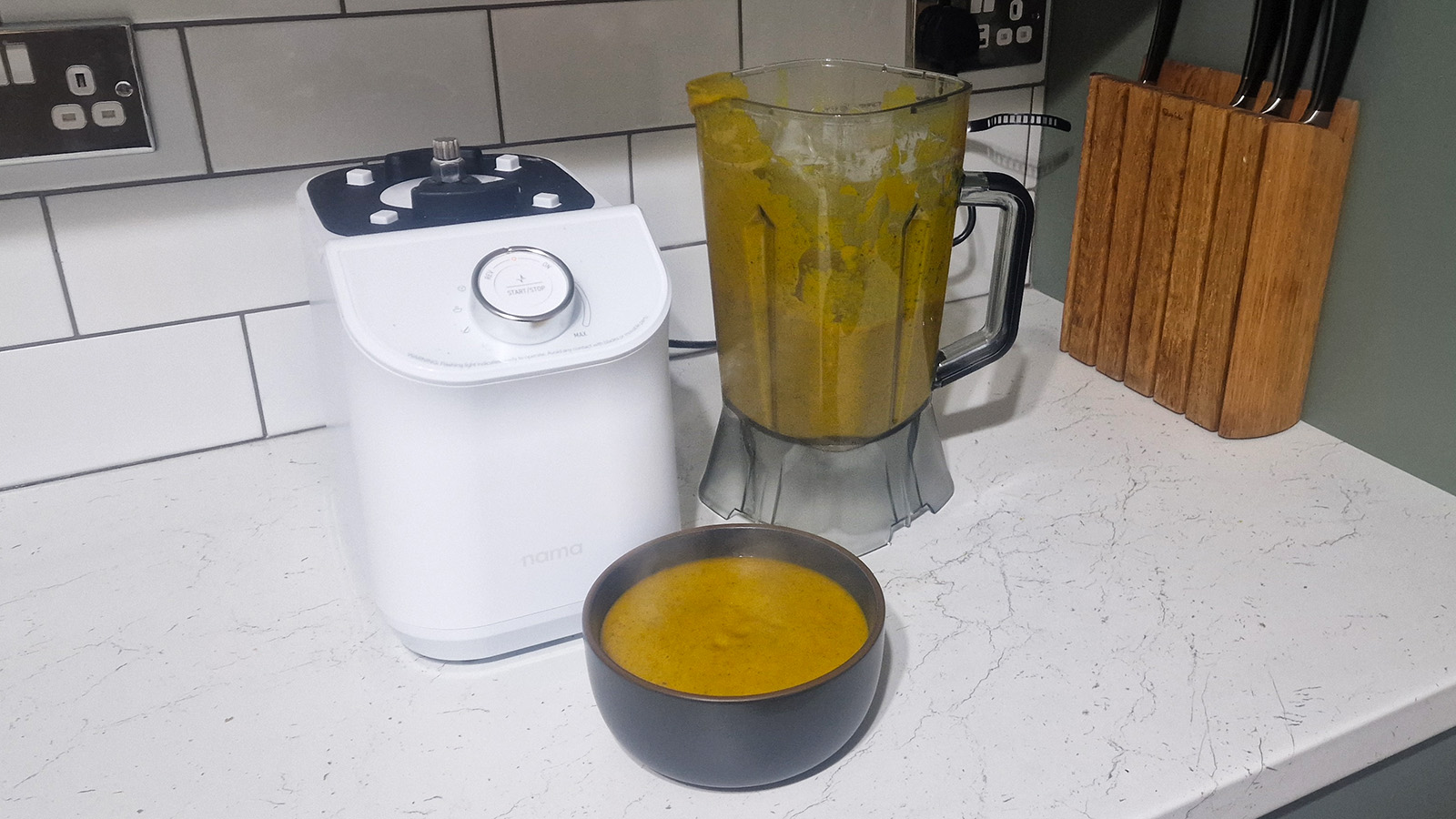
Not all blenders can handle hot ingredients, but if they do, we like to cook up a soup in one to see if it feels safe and if it can successfully tackle roughly-chopped veggies.
The Vitamix Ascent famously cooked up a hot and delicious soup from entirely raw ingredients when I first tested it, which is the moment I knew this blender was built differently. But even if you're not working with a Vitamix budget, a pitcher-style blender should ideally be able to take roasted or boiled ingredients and turn them into a piping-hot soup that's ready to serve straight out of the jug.
As with our other tests we look for texture, but we also use this as a test of how long the blender can run continuously without the engine getting hot.
Nut butter
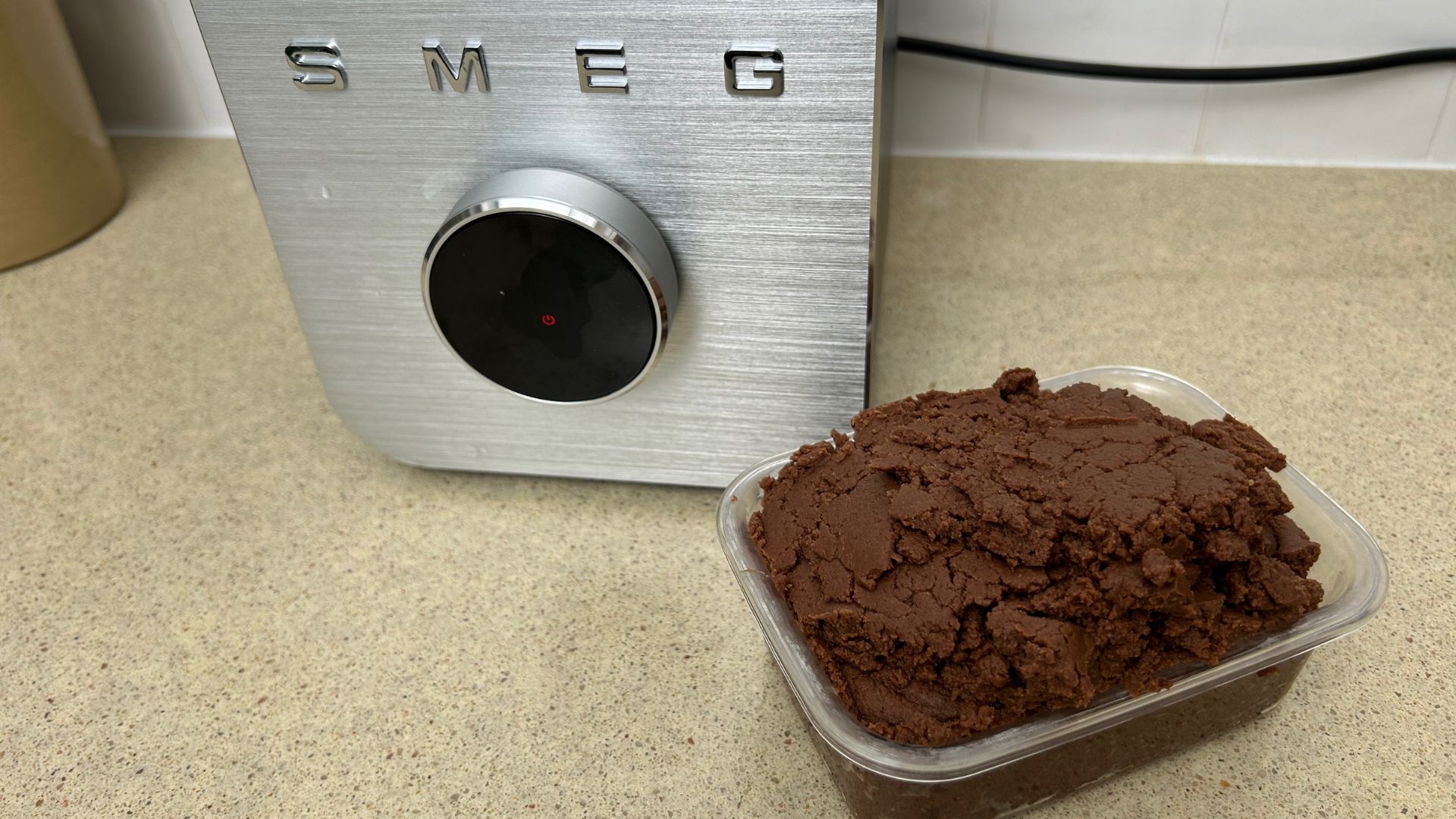
The most challenging test for a blender is to turn whole nuts into the kind of nut butter you could buy by the jar. And we found several blenders that made this look easy!
This process requires raw blending power. You first need to be able to blitz totally dry nuts into a crumb, and then leave them blending at a higher speed to allow the oils from the nuts to naturally release as the particle size is broken down. Eventually, if the blender is powerful enouhg, you should be left with a very smooth sauce.
User experience
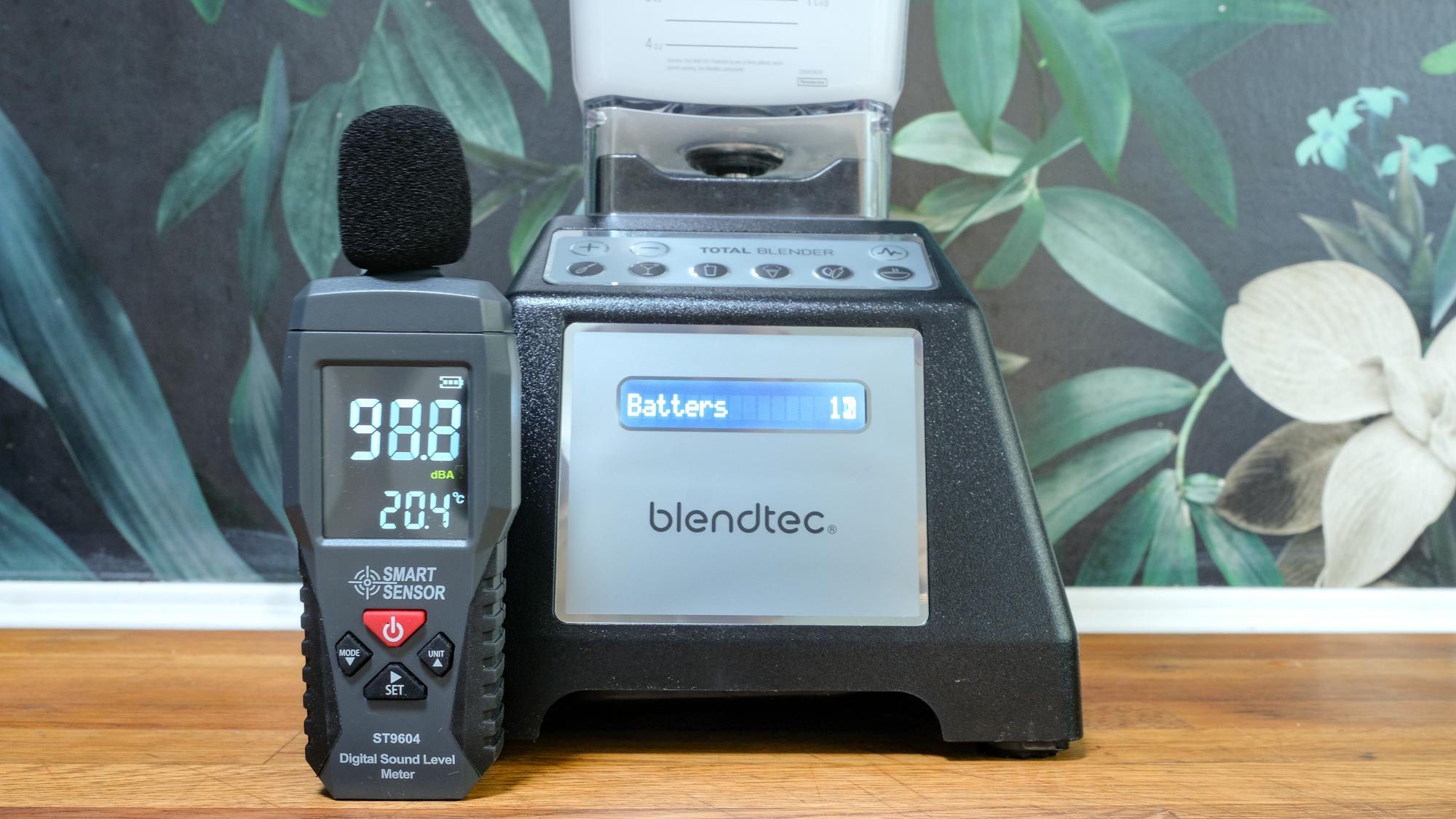
Blenders are noisy. But some are noisier than others, so we use a decibel reader on each model we test to see just how loud these machines can get.
There's also sound quality to consider, because the likes of a single-serve will be quite harsh and whiny compared to the (more tolerable) brash rumblings of a higher-power blender.
Then, cleaning experience is a factor we take very seriously. Cleaning blenders can be a pain, especially if you need to get under those blades to remove dried-on soup or nut butter, so factors like a self-clean mode and removable blades (such as the blades on the Ninja Detect Pro) are a big plus.
How to choose the best blender
What size do I need?
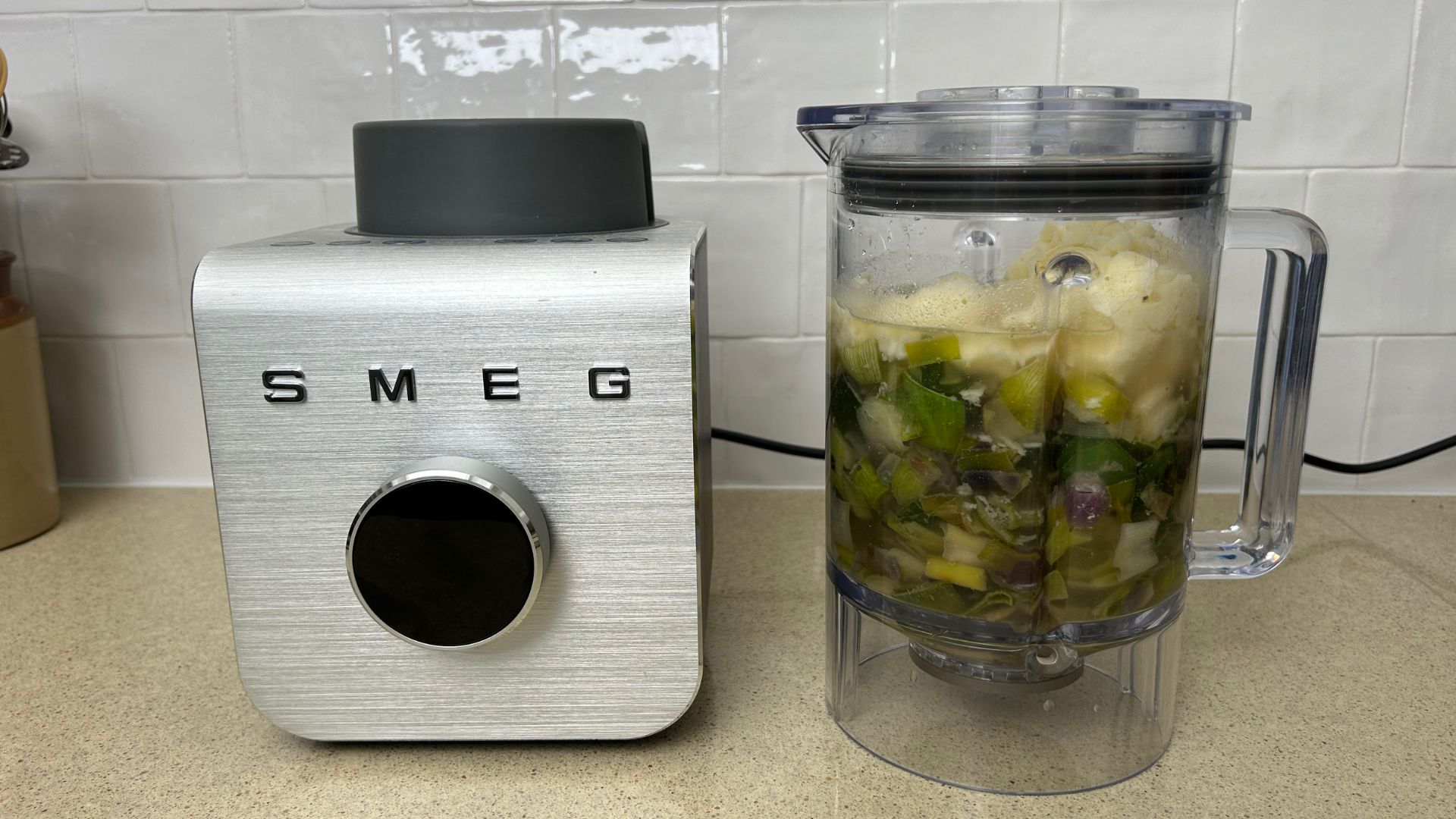
It's important to leave some air in your blending container, especially if it's airtight. Most blenders come with a Max Fill line, so while we talk about the capacity of the blending containers in this guide, note that this doesn't mean you'll be filling your blender right to the brim.
If you mostly plan on making single-servings, something like a Nutribullet will be perfect. Its blending cup will work for one, or at most two, servings at a time.
However, if you enjoy making soups or prefer to batch-cook, a jug-style blender will be your best bet.
What material is best?

The vast majority of blenders come with plastic-based blending containers. Not all plastic should be treated equally though, especially if you plan on blending hot ingredients.
The Vitamix line does come with plastic containers, made of BPA-free Eastman Tritan which will heat without any concerns. These are lightweight and less prone to breakage thanks to the flexible construction.
However, if you prefer to use glass, there are some options on the market. The Magimix Blender Power 4 performed very well in all of our tests, and while the glass pitcher is heavy, it's still capable of handling hot ingredients.
How powerful should it be?

Wattage and RPM are both good measurements of a blender's power. They indicate the power of the blender's motor and how fast its blades can rotate, which can indicate how successfully and quickly they can break down tougher ingredients.
However, the power level should be proportionate to the machine. The Nutribullet 900, for example, has 900 watts of power, which would seem a bit on the low side for a large blender like the Ninja Detect Power Pro, but is entirely suitable for a single-serve.
How can I keep it clean?

Some blenders have self-clean settings, but even if they don't, you can still clean under your blender's blades and into those hard-to-reach spots by adding some dish soap and water to your blending cup or pitcher and pulsing for a few seconds.
It's best to do this while your blender is still wet, otherwise, it could be trickier to dislodge dried-on drinks.
Not all blenders have dishwasher-safe parts and dishwashers can damage the sharpness of the blades over time, but with machines where the blades are removable, such as the Nutribullet, you can place some parts on the top shelf.
Get instant access to breaking news, the hottest reviews, great deals and helpful tips.

Millie is the Managing Editor of Homes at Tom's Guide. She's been reviewing home tech for over five years, testing everything from coffee makers to the latest vacuum cleaners.
With particular expertise in cookware and kitchen appliances, you'll struggle to find an air fryer Millie hasn't tested. She's traveled the world reporting on the latest home innovations and product launches, learning how to use pizza ovens from Pizzaiolos in Naples, and touring the De'Longhi factory in Venice. Millie is also an SCA-Certified barista.
When she's not reporting on home and appliance trends, Millie loves watching live music. She's currently learning the guitar - naturally, she plays a Fender.

